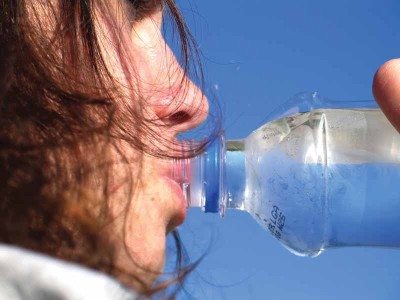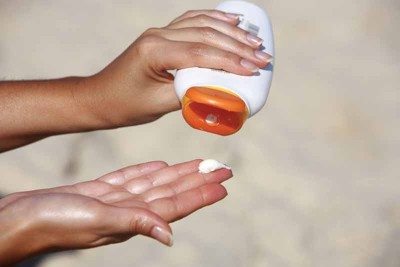
By Penny Stern
For many of us, summer is the most wonderful time of the year—in childhood, we rejoice at the end of school and in adulthood, we often plan vacations for sometime during the warm months. One of the best parts of the summer is the ability to engage in outdoor activities, such as swimming, hiking, and biking. To stay safe during summer activities, it’s helpful to consider a few key points.
First of all, the summer is virtually synonymous with sun. We love the sun and, in fact, can’t live without it. But it’s vital to protect our skin from the sun’s UV rays. Skin cancer is by far the most common type of cancer but you can help prevent it. Using sunblock with an SPF of at least 30 is a minimum first step.
It’s not enough to apply sunblock once, when you’re outdoors, you need to do so at least every two hours and more frequently especially after swimming in order to ensure its protective effect. And, don’t be stingy; use an adequate amount which is generally determined to be equivalent to what would fit in a shot glass. You can easily get sunburned after a short time as the water reflects sunlight right back up into your face and upper body so be sure that you are adequately protected both in terms of amount and frequency of sunblock applied and the SPF level.
Second, avoid getting burned—that means trying to protect yourself from the sun at its strongest (from 10 a.m. to 2 p.m.). Wear a hat with a brim that protects your face, neck and ears. When you do participate in outdoor activities, make sure that shaded areas are available.
Don’t forget your eyes by wearing sunglasses that clearly have UV protection. This isn’t a fashion statement; make sure the lens is dark enough. Protecting your eyes can help avoid cataracts down the road.
And while you’re in the water, remember that water can be dangerous, particularly to the youngest among us. Drowning is the leading cause of injury and death in children ages 1 to 4. Never leave a child unattended in or around water. Only a few inches of water can spell disaster for a child. Private pools must be secured with a lockable fence to ensure that children (and others) do not get into the water.
Make sure that you stay well-hydrated at all times and especially during the summer, when we naturally perspire in order to keep our bodies cool. If you feel thirsty, you’re already dry, so keep ahead of the game and carry a water bottle with you at all times. Remember, water is your best beverage for hydration; sugary drinks do not quench thirst. We are all potentially vulnerable to heat and dehydration.

When it comes to biking, don’t forget that the rules of the road apply to those riding on two wheels as well. Each year in the U.S., an estimated 500,000 bicycle-related injuries occur that result in an emergency room visit. Make sure that you and your family members are safe riders.
Bike helmets are life-saving so wear them and require that all family members do. It’s an excellent idea to wear helmets for other activities, including skateboarding and in-line skating. Other protective gear, such as pads, reflective tape and lights can also help prevent accidents that lead to injuries.
Finally, who doesn’t love to walk in the balmy weather of summer? Keep in mind that there are other creatures about, especially ticks. These tiny bugs can transmit a number of diseases, especially Lyme disease, which annually infects more than 300,000 people and can have serious consequences. So, if you love to walk in areas known to be infested with ticks (and it’s getting harder and harder to find places that don’t have ticks), take a few precautions.
- Avoid high grasses.
- Try to walk in the center of trails.
- Don’t leave your skin exposed.
- Wear long pants tucked into socks for maximum protection and don’t forget tick repellents.
- Pets are not immune, so check both people and your pets for ticks. They’re tiny but easy to spot if you know what you’re looking for.
- If you do find a tick, it must be removed very carefully. The Centers for Disease Control and Prevention (CDC) recommends that a fine-tipped tweezer be used to grasp the tick as close to the skin’s surface as possible. It should be pulled upward and after removal, the area should be cleaned with either soap and water or an iodine scrub or rubbing alcohol. Never crush a tick with your fingers.
Summer can be a great season as long as you take some simple precautions to make sure that everyone stays safe. If you have specific questions about summer safety, be sure to consult with your health care providers.
Penny Stern, MD, MPH, FACPM, FACOEM, is the director of preventive medicine at Northwell Health.


















